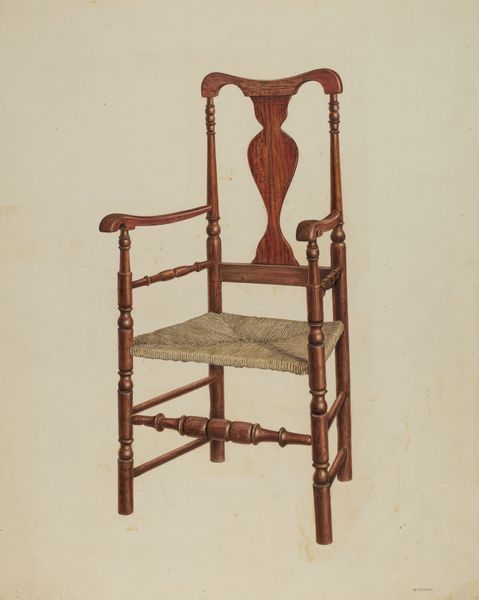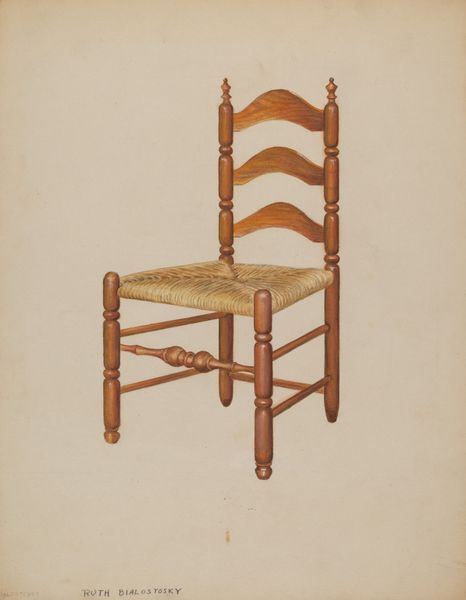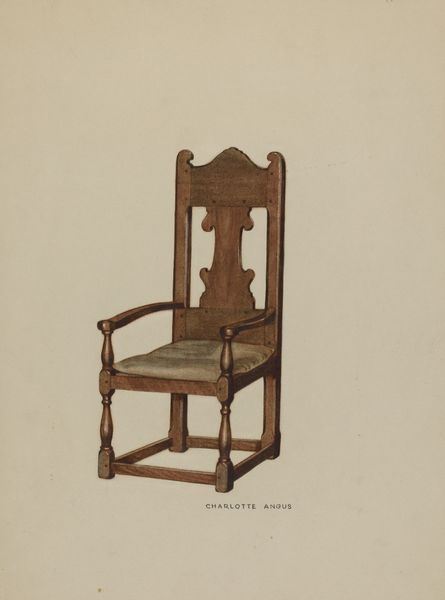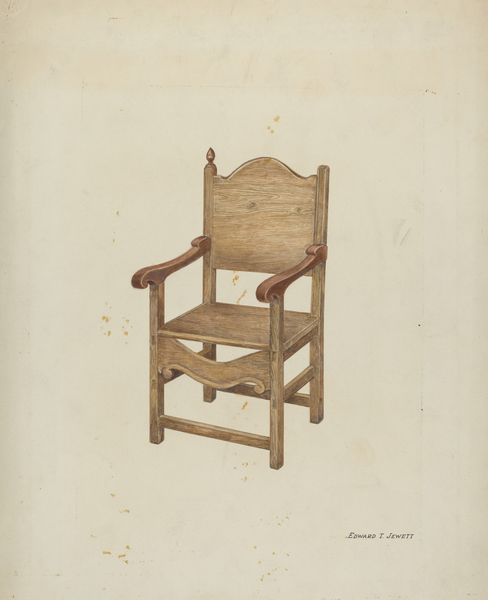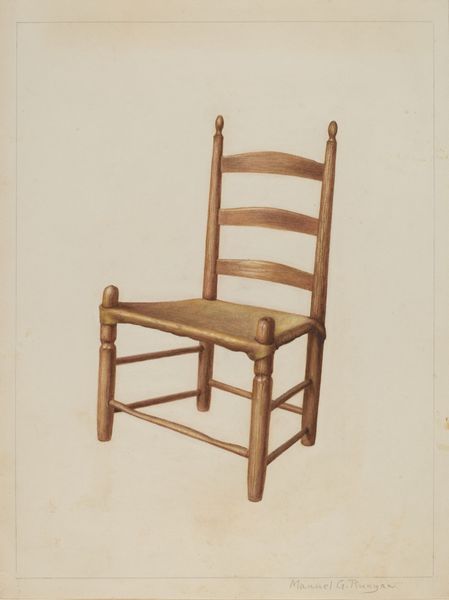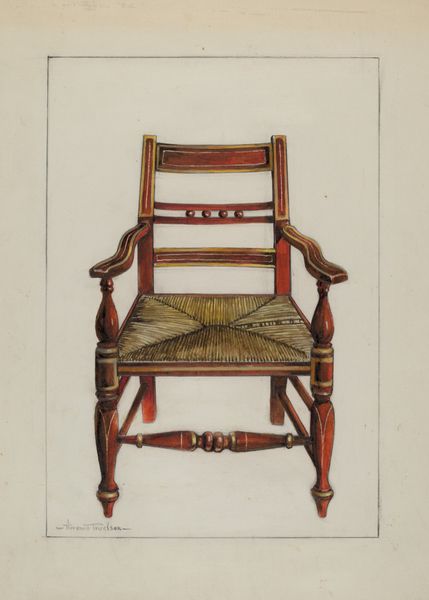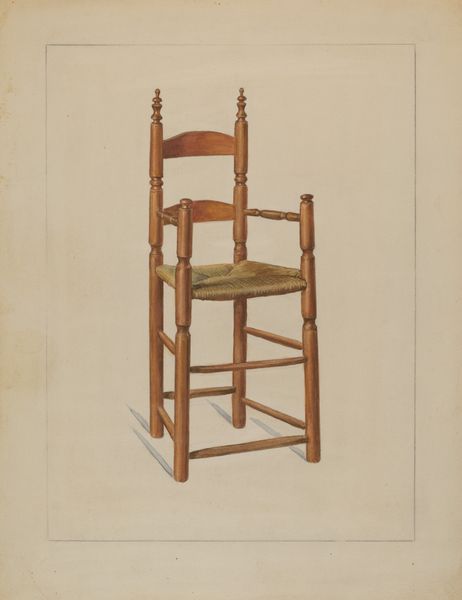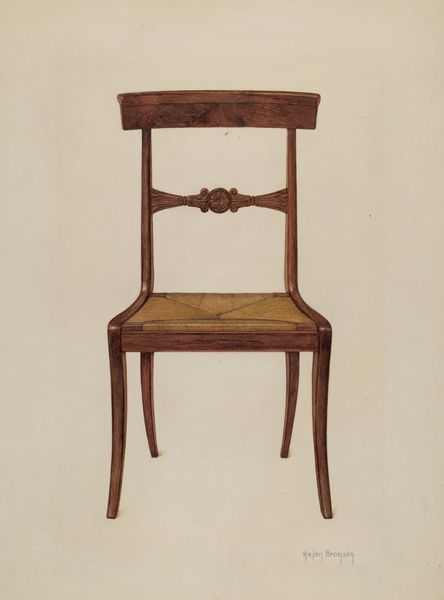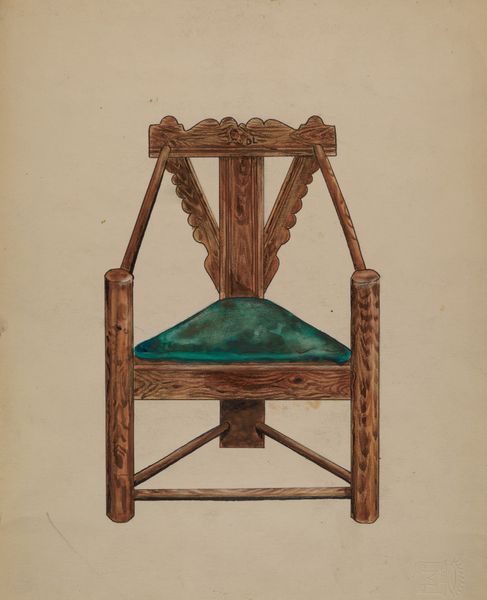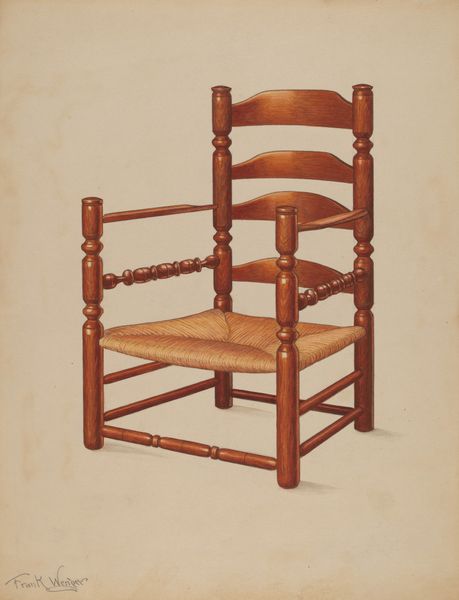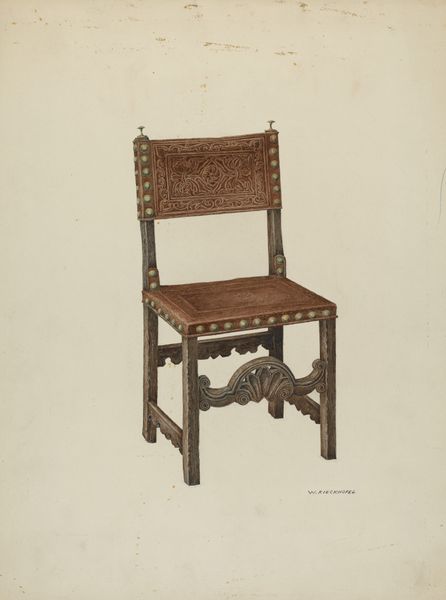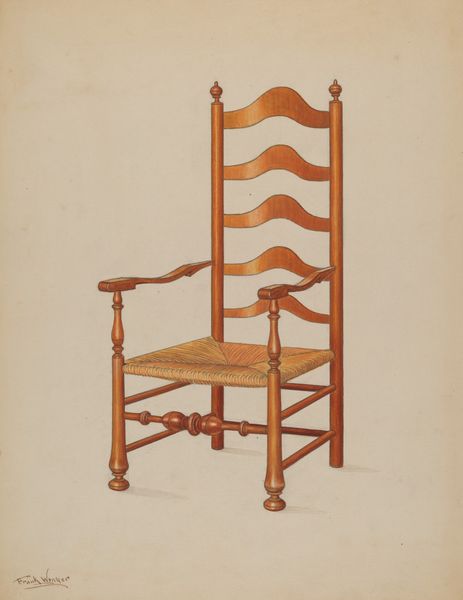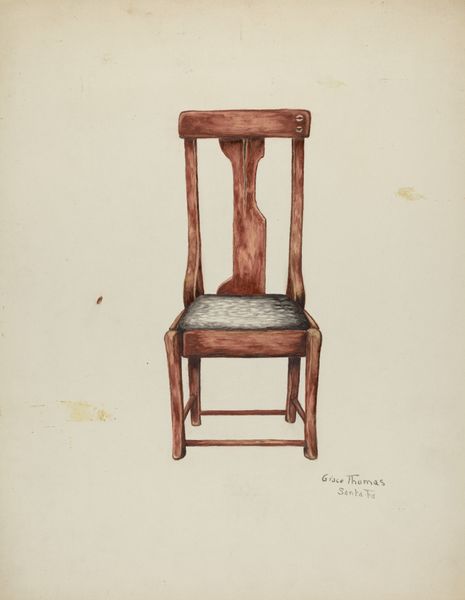
drawing, watercolor
#
drawing
#
watercolor
#
watercolor
#
realism
Dimensions: overall: 36.6 x 29.6 cm (14 7/16 x 11 5/8 in.) Original IAD Object: none given
Copyright: National Gallery of Art: CC0 1.0
Curator: Here we have Harry Eisman's "Roundabout Chair," rendered in watercolor and drawing around 1940. Editor: The first impression is a distinct feeling of...domesticity. The warm tones and the detail in the wood grain give it a very inviting, almost nostalgic feel. Curator: Nostalgia is a potent word here. Looking at this, one must consider the broader socio-economic context of the 1940s. There's a tension here; this style of chair speaks to pre-war domestic ideals, a world often only accessible to certain classes, certain identities. Was Eisman subtly critiquing that? Editor: Or perhaps celebrating an ideal? Consider the craftsmanship depicted. The grain of the wood is rendered with such loving precision, and that deep crimson cushion with what appears to be an almost floral pattern. The circular design invites conversation, warmth. Could that crimson allude to heart and hearth symbolism? Curator: Heart and hearth... appealing imagery. However, these types of symbols often exclude marginalized communities. Whose hearts and hearths are we really picturing? Can we really embrace what feels homey when certain populations have been denied that access and that symbolism historically? Editor: Perhaps the act of drawing a single chair detaches it from immediate societal structures, allowing us to reflect on form and, indeed, symbolism without subscribing to exclusionary historical baggage? The empty chair becomes a welcoming gesture in itself, regardless of gender, race, or class. The chair may also be seen as a throne which has cultural meanings for access to power in various cultural institutions. Curator: That's a perspective that prompts further reflection. Thank you for that consideration. It seems our dialogue is leaning towards one that embraces and considers multiplicity within interpretation. Editor: Precisely, finding that balance between what we are willing to view on a symbolic scale, or in a material culture as the key for understanding memory and place and identity and that makes our task richer.
Comments
No comments
Be the first to comment and join the conversation on the ultimate creative platform.
